The ground had glittered with frost when we started hunting; now, the shadows were beginning to lengthen, and not only was my gamebag still empty, my barrels weren’t even dirty. We—meaning my English cocker spaniel, Rumor, and I—had moved exactly one woodcock all day, a bird whose twittering rise I heard distinctly but whose pear-plump form I was unable to “find,” visually, through the gray, thickly massed ranks of popple.
This vanishing act was a little mysterious, given that there was no leafy canopy left to conceal the bird’s exit, but when you’ve been hunting woodcock as long as I have you learn to take the inexplicable as a matter of course. Earlier in the season I’d folded a woodcock that not only left blood on the leaves where it fell but on the leaves it fell through on the way down, and yet Rumor, who hunts dead like a nuclear-powered Roomba, couldn’t come up with it.
I have no explanation for that.
After moving that lone bird in the second spot we tried (the best piece of cover we found all day, as it turned out) Rumor and I spent the rest of the day hacking around in what was mostly “B”-grade cover—places where you wouldn’t be surprised to move a woodcock, but where you probably wouldn’t hunt if you had your druthers. The spots that really make my antennae quiver are young popple cuttings with plenty of brushy understory, and there was precious little country thereabouts that fit that description.
I need to back up here and mention that the general area we were hunting, about 40 miles northwest of my home in Green Bay, is a mosaic of public lands that are themselves mosaics of open marshes, swampy timbered lowlands, and lobe-like ridges stippled with oaks and white pines, some of them massively impressive. It’d been a long time since I’d hunted there (although my wife Joan and I enjoy driving through in the spring to view the swans and sandhill cranes that congregate during migration), and I wanted to see if a guy could still kill a bird or two in that neck of the woods. I wanted to prove to myself that it was possible.
More Like This
It seemed like a fun challenge; plus, it fit with the kick I’d been on to find some new, closer-to-home places to hunt. When you live where I do in a state as rich in public land as Wisconsin, you shouldn’t have to drive two hours to stand a reasonable chance of putting up a few woodcock.
That was my working hypothesis, anyway.
Now, though, after several fruitless hours spent in the kind of shin-bashing, eye-twigging, nostril-raping wastes where the putatively simple act of putting one foot in front of the other is freighted with peril, the shine was wearing off of my bright idea. I was losing faith in the entire enterprise, bitterly second-guessing my decision to try this area in the first place and, in particular, becoming actively pissed-off about the disappointing quality of the cover. For some reason I was confident, going in, that I’d find an appealing selection of aspen cuts.
“Wishful thinking,” I believe this is called.
Still, if my own spirits were flagging, Rumor’s enthusiasm remained bouncily undimmed. And for that I was down-on-my-knees grateful. The main story line coming into the grouse and woodcock season, you see, was the uncertainty surrounding Rumor. It boiled down to a simple question:
Will she hunt?
This is not a question you’d normally ask of a robustly healthy nine-year-old dog who, prior to becoming my partner afield, was one of the top field trial cockers in the country. My admittedly imperfect explanation is that after a spectacularly violent June thunderstorm, what had been a specific aversion to thunder (not uncommon even in hunting dogs, paradoxically) metastasized to become, in Rumor’s case, an aversion to any sound resembling thunder.
Including, under certain circumstances, the sound of a shotgun going off.
The thing is, I didn’t become aware of the problem until September, when Rumor and I were invited to join a group of hard-core prairie grouse hunters for the South Dakota sharptail opener. While the specifics are somewhat more nuanced, the long and short of it is that when the other guys in our widely spaced line got into birds and started shooting, Rumor, who’d been hunting just fine until then, tucked her tail between her legs and shut down.
The following morning, after giving her the rest of that first day off, I tried taking her on a solo hunt. No other dogs, no other hunters, just the two of us…but it was no soap. We hadn’t gone a hundred yards when she stopped in her tracks and refused to take another step. Then, when it became clear to her that we were heading back to the truck, she couldn’t get there fast enough.
I had a big, big problem on my hands.
Back in Wisconsin, I turned to my old friend Bob Olson, the professional trainer whose ability to snap dogs out of funks and get their heads screwed on straight again is unsurpassed. He took his usual all-fun, no-pressure approach, releasing quail from his Johnny house and letting Rumor flush them with little or no direction. But the results, especially after he re-introduced the gun to the equation, were decidedly mixed. One minute she’d hunt like a champ, the next she’d sit there, trembling.
“I wish I knew what to tell you,” Bob said. “I think you just have to take her hunting. Hopefully she’ll come around once you get her back into grouse and woodcock cover. She’s familiar with that environment, and she’s made a lot of good memories there.”
While that’s not exactly how it happened—the first time out was pretty rocky—by early October Rumor had gotten her groove back. I breathed a sigh of relief as deep as the Laurentian Abyss, collected a couple of limits of woodcock (highlighted by Rumor’s customary warp-speed retrieves) that left me feeling almost giddily optimistic about our prospects for the rest of the season…and then came down with Covid. Inevitable, I suppose, but the timing left a lot to be desired.
Thankfully I was only on the sidelines for a week, and when Rumor and I got back in the game we hit the ground running. One day we got insanely lucky and bagged three grouse—a bonanza, in these woefully grouse-impoverished times.
Which brings us back to that close-to-home hunt in which, by late-afternoon, I was just going through the motions, defeated, dispirited, and disengaged. We were working a narrow fringe of alders that divided the dry marsh on our right from the open woodland to our left; it wasn’t much, but it was the best option we had. There was no compelling reason to believe we’d flush a woodcock in that spot, especially in light of recent (non)events, but as someone observed, “Woodcock are where you find them.”
To say that the bird caught me with my pants down would be a colossal understatement. My first shot was barely in the same zip code, but my second caught the bird just as it leveled off across the marsh. That was the good news; the bad news was that it fell in an expanse of reed canary grass that was chest-high and doghair-dense. It took me about a nanosecond to size up the situation and realize that all I could do was guide Rumor to the area of the fall (she hadn’t gotten a mark) and hope that her nose, and her desire, were up to the task.
They were.

It was one of the hardest-earned woodcock I could remember—and one of the most satisfying. Just a few minutes earlier we’d been mired in a slough of despond; now, we were basking in the warm glow of success, and I had my quirky little black-and-tan dog to thank for it.
I’ll tell you this, though: You won’t catch me hunting in that part of Wisconsin anytime soon.




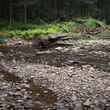


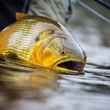



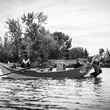









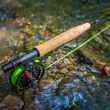
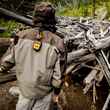



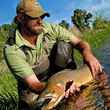
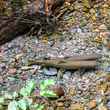


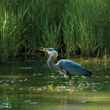
Comments
Robbins Church replied on Permalink
An unexpected find. If I can't have fly fishing, and all that goes with it, I'll take a tale by Tom Davis, any day.
Mark replied on Permalink
Great story. Nice to read about another outdoor sport as randomly frustrating, yet compelling, as fly fishing.
Pages